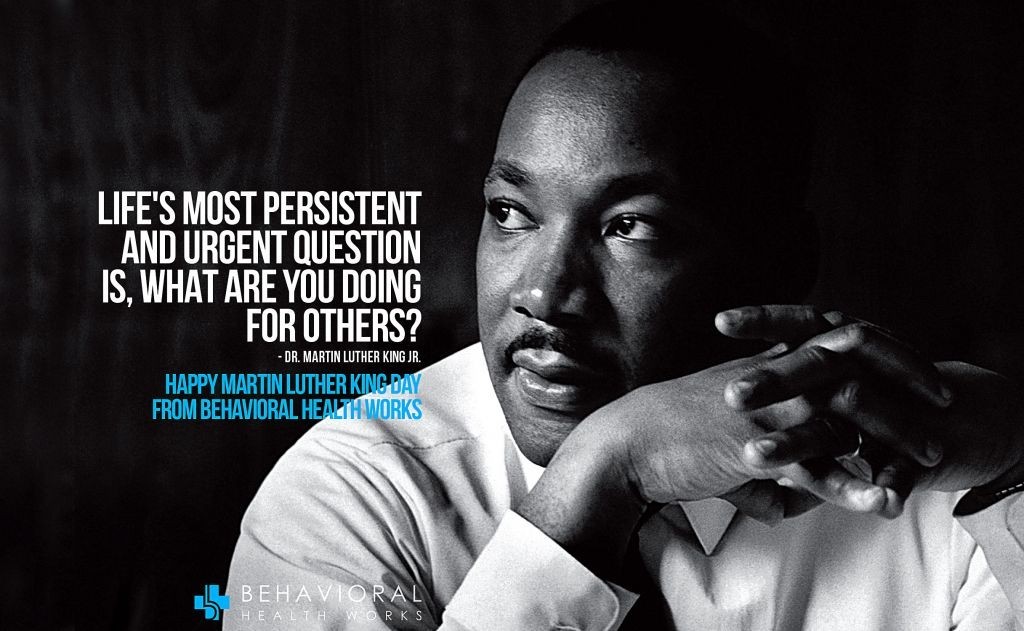Keep Inclusion In Mind On M.L.K. Day
January 18th is a day that’s etched well into our minds and memories as Martin Luther King Day. He stands for inclusion and about bringing more people into the mainstream, giving them opportunities. It is no secret that his work brought change into American society, but this begs the question – are we truly inclusive when it comes to people with disabilities?
It took an additional three decades for the Americans with Disabilities Act to come into force after the iconic speech first made by Martin Luther King. Even today, just a fraction of those with disabilities, both physical and mental, are able to find gainful employment in society. So what are we doing for those with autism and other challenges? The occasion of MLK Day is as good a time as any, to begin a concerted effort to be inclusive and to extend that definition to people with disabilities as well.
Here’s a look at what’s being done already, and what more society can do towards this goal of inclusion in community, recreation, education, and employment.
Special Olympics
Special Olympics represent the ideal for what organized society backing for inclusion can help achieve. That said, community events that include those who are differently abled is a big way to bring people of all ages and backgrounds together. In the lead up to these events, individuals get involved in practicing for track events and other sports that build social interaction. Special golf tournaments can also bring together a diverse group of people and build a sense of community and inclusiveness.
Inclusion programs at schools
Rather than have separate schools for those with disabilities, if mainstream schools can run inclusion programs it will help individuals with these challenges to assimilate better into society as they grow up. After all, when they graduate from school it is the same peers, both disabled as well as those without these challenges, that they will need to work and interact within society; at the workplace and in other social situations.
Employment opportunities
It’s estimated 50,000 individuals with autism will enter adulthood each year. Sometimes, we wrongly assume that someone with a disability is not looking to work or are simply not going to be able to work. In fact, the reverse may be true. There is often a yearning to be gainfully employed. Which is why the government actually has a separate indicator that tracks unemployment rates in this segment. As such, the Act prevents screening out someone based on their disability. An exception is if the work itself hinges on the specific ability the person lacks as a result of their disability.
Inclusive stories, television, movies and media
The previous year Sesame Street’s first ever character with autism named Julia was introduced. Sesame Street’s, “See Amazing in All Children“, campaign is an effort to bring awareness and acceptance to children with autism. Unfortunately what Sesame Street has done with the creation of Julia is an outlier in media today. Much of mainstream media and publishing caters to the majority. There has been a concerted effort to adequately represent minority communities – whether it is ethnic origin, race, gender or economic strata, and increasingly even sexual orientation. However, the disabled, who represent the largest minority group are often overlooked. Someone with autism for instance, might be happy to see and will relate to stories about someone with similar challenges as his/her own. And this can’t be limited to mere lip service. These characters must be the heroes of the stories or play key roles in the narrative, whether it is a television program, a movie or a book. There have been Oscar winning movies about the lives and challenges of people with disabilities, but it is harder to recall a story where the detective or romantic lead was someone who just happened to have a physical or mental challenge.
#MartinLutherKingDay #inclusion
 Behavioral Health Works
Behavioral Health Works Behavioral Health Works
Behavioral Health Works